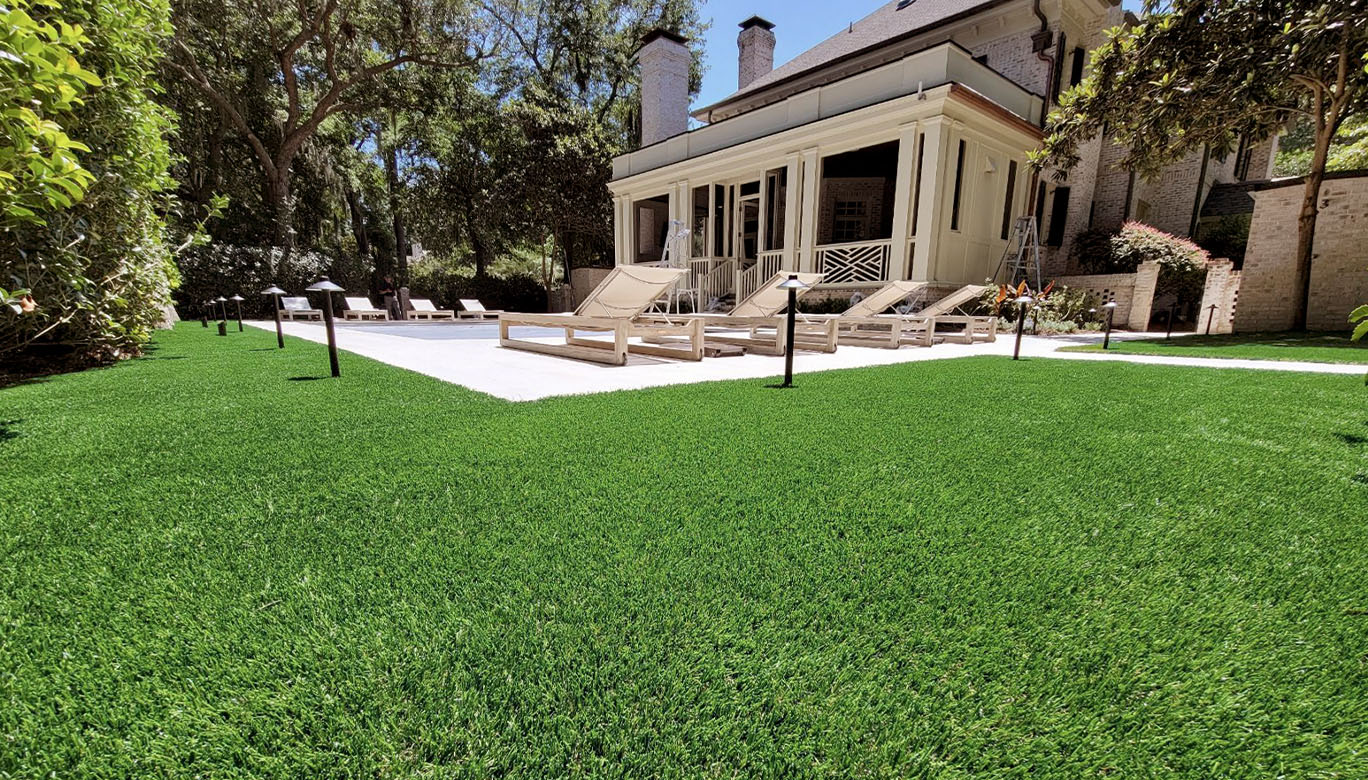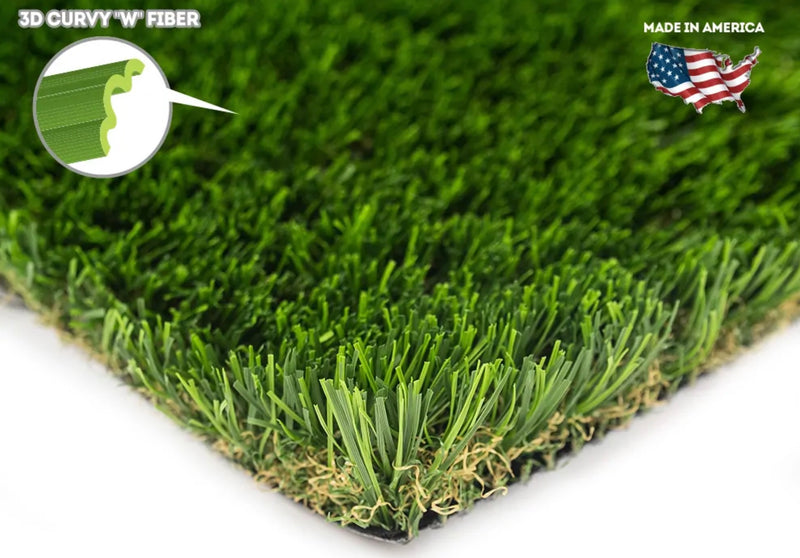Environmentally Safe Arizona Artificial Turf for a Always-Green Lush Green Lawn
Environmentally Safe Arizona Artificial Turf for a Always-Green Lush Green Lawn
Blog Article
Explore the Environmental Benefits of Opting for Synthetic Grass Solutions
The adoption of synthetic lawn solutions offers a compelling opportunity to deal with pressing ecological challenges. By substantially lowering water use and minimizing the application of damaging chemicals, these alternatives not just promote lasting landscaping however also protect local environments.
Water Conservation Perks
One of the most significant advantages of synthetic turf is its capacity to save water. In contrast, fabricated lawn does not need watering, significantly reducing the total need for water resources.
By removing the need for normal watering, synthetic grass adds to lasting landscape methods and aids reduce the environmental influence of extreme water intake. Furthermore, the preservation of water reaches the decrease of runoff, which can result in soil disintegration and waterway contamination.
In addition, the setup of synthetic grass allows municipalities and homeowners to allot water sources extra successfully, focusing on vital usages such as alcohol consumption water and agriculture. The change towards synthetic grass not only promotes accountable water use yet additionally straightens with more comprehensive ecological goals aimed at preserving natural deposits.
As communities progressively prioritize sustainability, the water conservation advantages of man-made lawn provide a compelling case for its fostering in industrial and property landscaping projects.
Lowered Chemical Usage
The transition to synthetic grass significantly lowers the dependence on chemical therapies generally made use of in all-natural lawn upkeep. Conventional turf monitoring commonly involves the application of plant foods, herbicides, and chemicals to advertise growth and control bugs. These chemicals can posture risks to human health and wellness, local wild animals, and the setting, contributing to soil and water contamination.
In comparison, fabricated turf removes the requirement for these dangerous substances. When installed, it calls for minimal upkeep, mostly including normal cleansing and infrequent infill replenishment. This reduction in chemical use not just benefits the instant environment yet likewise adds to more comprehensive eco-friendly security. By decreasing the launch of artificial substances into the ecosystem, synthetic grass advertises healthier soil and water systems.
Furthermore, the absence of chemical drainage related to fabricated turf installments assists protect local rivers from air pollution, supporting aquatic life and preserving biodiversity. Arizona turf. As areas progressively prioritize lasting methods, choosing for fabricated turf offers a sensible service that lines up with ecological conservation goals. With this change, property proprietors can appreciate lavish green areas without jeopardizing environmental health and wellness, paving the way for a more sustainable future
Reduced Carbon Footprint

Additionally, the installation of synthetic grass can cause significant water conservation. All-natural grass call for considerable amounts of water for irrigation, which not only includes in the carbon impact connected with water removal and treatment but also stress local water sources. In contrast, synthetic turf needs minimal maintenance, requiring no watering, consequently dramatically reducing water usage and its associated power prices.
In addition, the long life of fabricated lawn adds to its reduced carbon impact. With a lifespan of up to 15 years or even more, the demand for frequent replacements is diminished, resulting in much less waste and reduced power intake in production and throwing away typical lawn options. Generally, synthetic grass presents a lasting alternative for eco aware landscaping.
Habitat Conservation
Environment conservation is a crucial factor to consider in the dispute over landscaping options, especially Your Domain Name when comparing synthetic grass to all-natural grass. Natural turf lawns commonly need extensive upkeep, consisting of using fertilizers, herbicides, and pesticides, which can adversely influence local ecosystems. These chemicals can seep into the soil and rivers, hurting indigenous flora and animals and interfering with regional habitats.
On the other hand, artificial grass presents an opportunity to minimize the ecological footprint of landscape design. By choosing artificial grass, house owners can minimize the interruption of natural environments related to typical lawn care practices. Fabricated turf gets rid of the demand for damaging chemicals, thus protecting nearby wild animals and keeping the integrity of wikipedia reference surrounding ecosystems. Additionally, the installment of artificial grass can cause the conversion of former yard locations into more click for more biodiverse landscapes, such as pollinator gardens or indigenous plant locations, which can support regional wild animals.
Ultimately, the transition to synthetic grass not only preserves water and reduces maintenance efforts yet additionally promotes a more unified partnership in between human tasks and the native environment, advertising environment conservation at the same time.
Long-Term Sustainability
Long-lasting sustainability is an important consider assessing the advantages of artificial lawn over standard turf lawns. Among the most substantial advantages of synthetic grass is its durability; it can last approximately 15-20 years with marginal upkeep, whereas natural turf needs regular reseeding and replacement. This long life decreases the need for consistent resources, such as water, fertilizers, and chemicals, which are necessary for preserving a healthy and balanced turf yard.
Furthermore, artificial turf adds to a decrease in carbon emissions connected with grass care tools. Standard lawns usually need gas-powered lawn mowers, trimmers, and blowers, every one of which add to air contamination. Arizona turf. In contrast, synthetic grass eliminates the requirement for such tools, promoting a cleaner atmosphere
In addition, the manufacturing of artificial grass significantly utilizes recycled materials, boosting its sustainability profile. As makers adopt green practices, the ecological footprint of synthetic grass proceeds to decrease.

Conclusion
The fostering of man-made turf services offers considerable environmental benefits, including substantial water preservation, minimized reliance on dangerous chemicals, and a lower carbon impact. Artificial grass help in protecting all-natural habitats by decreasing land disturbance and advertising long-term sustainability via the use of resilient products. Collectively, these elements emphasize the possibility of synthetic grass to add positively to environmental health and wellness and supply a practical option to typical landscaping methods in an increasingly resource-conscious world.
In comparison, fabricated turf does not need watering, dramatically reducing the general need for water sources. By decreasing the release of synthetic compounds right into the ecological community, artificial turf promotes much healthier dirt and water systems.
In addition, the installment of artificial turf can result in considerable water preservation. In comparison, man-made grass requires very little upkeep, calling for no watering, therefore significantly reducing water usage and its associated energy expenses.

Report this page